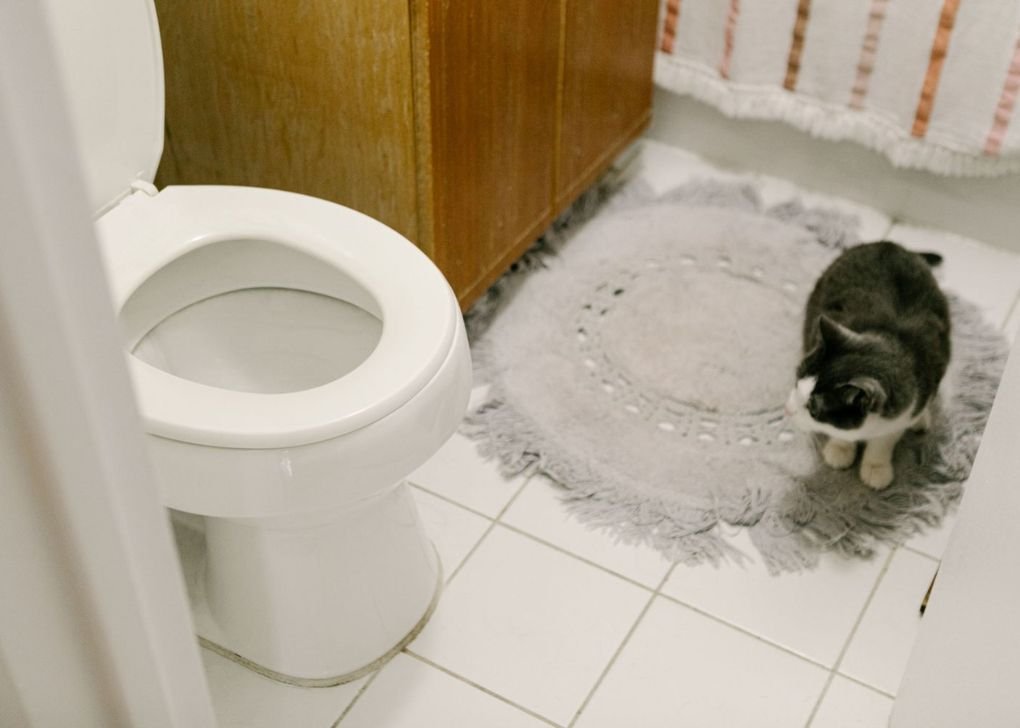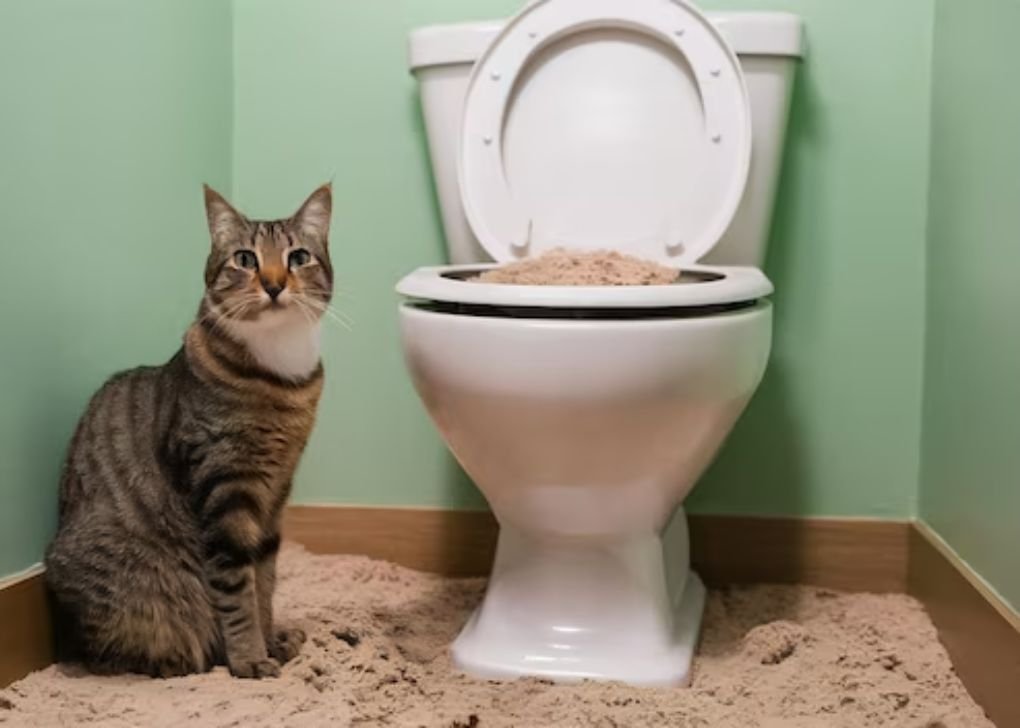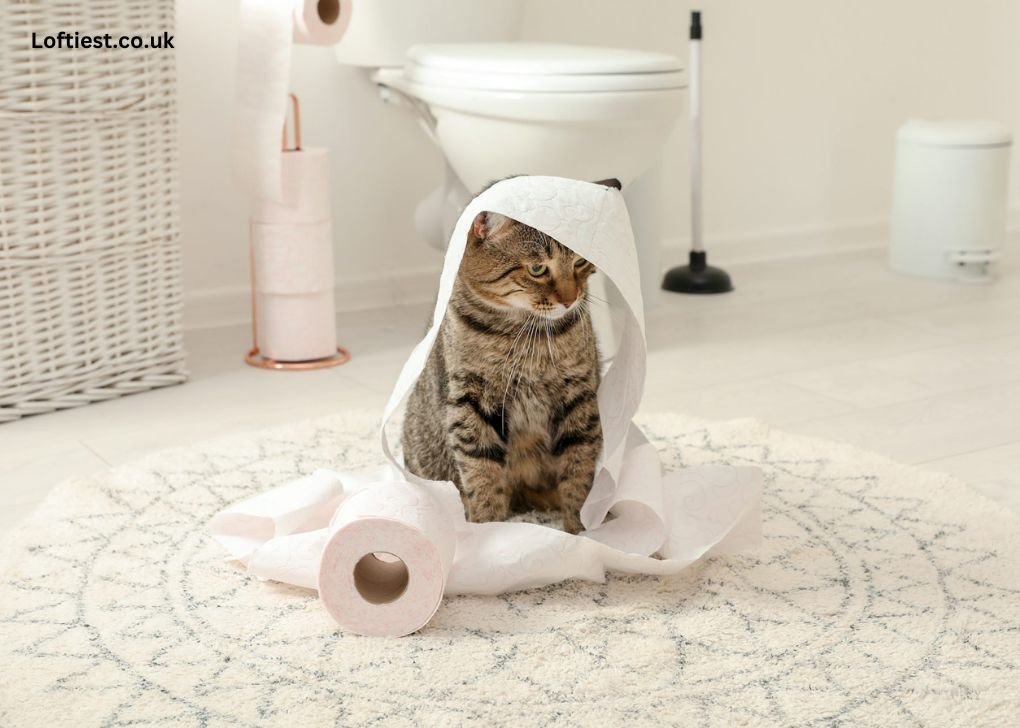Are you a cat owner who has accidentally flushed cat litter or poop down the toilet? Or perhaps you’ve heard that flushing cat poop can spread toxoplasmosis, a potentially harmful parasite. The question on many cat owners’ minds is, can you safely flush cat poop down the toilet?
In this blog post, we’ll explore the dos and don’ts of flushing cat poop and provide some helpful tips to keep your plumbing and the environment safe. So, before you reach for the flush handle, let’s find out if it’s okay to flush cat poop down the toilet.
Also Read: How to Stop Cats Eating Each Other’s Food?
The Basic Premise: Flushing Cat Poop
Flushing cat poop may seem like a convenient and hygienic way to dispose of your cat’s waste, especially if you’ve accidentally flushed cat litter down the toilet before. But there are serious problems that might arise from this widespread practice. While some types of cat litter are marketed as flushable, the reality is that most plumbing systems are not designed to handle even small amounts of litter.
When cat poop, along with litter, enters the sewage system, it can contribute to blockages and potentially harm the environment. Understanding the implications of this practice is crucial for cat owners seeking responsible waste management solutions.

The Risk of Toxoplasmosis in Human Water Systems
One significant health concern associated with flushing cat poop down the toilet is the potential spread of toxoplasmosis. Toxoplasmosis, a disease caused by the parasite Toxoplasma gondii, can pose serious health risks to humans, particularly pregnant women and individuals with compromised immune systems.
When cat feces containing this parasite are flushed, they can contaminate water systems, posing a risk of toxoplasmosis to communities. Municipal water treatment facilities may not always effectively remove this parasite, leading to potential public health concerns. It’s crucial to understand these risks before deciding to flush cat poop, as the implications for human water systems are significant.
Plumbing Problems and Septic System Considerations
Flushing cat poop down the toilet may appear as an easy fix to waste disposal, but it can cause severe plumbing issues and affect septic systems adversely. Traditional and even some flushable litters can clog pipes, leading to expensive repairs.
For homes with septic systems, cat feces can disrupt the delicate balance of bacteria necessary for breaking down waste, potentially leading to system failure. Consequently, it’s important for cat owners to consider these factors carefully before deciding to flush cat waste, as it can lead to long-term problems for their home’s plumbing infrastructure and the environment.
Also Read: Why Does My Cat Eat My Other Cat’s Food?
Legal and Municipal Regulations
Awareness of legal and municipal regulations surrounding waste disposal is essential for cat owners considering flushing cat poop down the toilet. Various municipalities have distinct guidelines and laws aimed at protecting public sewer systems and the environment from potential contaminants.
For instance, some areas explicitly prohibit the flushing of anything other than human waste and toilet paper, including cat feces and so-called “flushable” litter, due to the risk of blockages and contamination. Violating these regulations can result in fines and penalties for homeowners. Additionally, environmental laws may also restrict such practices to prevent harm to local waterways and wildlife from pathogens like Toxoplasma gondii.
Before flushing cat waste, it’s crucial to consult local waste management policies and environmental protection regulations to ensure compliance and avoid contributing to broader public health and environmental issues. Engaging with these regulations not only helps in maintaining the integrity of sewage systems but also supports efforts in safeguarding community health and the well-being of local ecosystems.

Alternatives to Flushing Cat Poop
Considering the risks of attempting to flush cat poop down the toilet, it’s essential to explore safer alternatives for disposal. Biodegradable litter bags offer a practical solution, allowing cat owners to responsibly dispose of cat waste in the trash.
Another environmentally friendly option is composting, designed specifically for pet waste, which prevents harmful pathogens from entering local water systems. Additionally, investing in a pet waste disposal system can provide a hygienic way to handle cat poop without relying on flushing. These alternatives ensure the safety of plumbing systems and the environment while effectively managing cat waste.
Also Read: What To Do If Your Cat Eats Weed & Other Dangers of Marijuana
Conclusion
While it may seem convenient, flushing cat poop can lead to plumbing issues, environmental harm, and health risks like toxoplasmosis. As a long-time cat owner, I’ve found that opting for biodegradable litter bags or dedicated pet waste systems offers a more responsible approach. These alternatives not only protect your plumbing but also support a healthier environment. Always check local regulations and consider the long-term impact of how you dispose of cat waste it’s a small change that can make a big difference.
